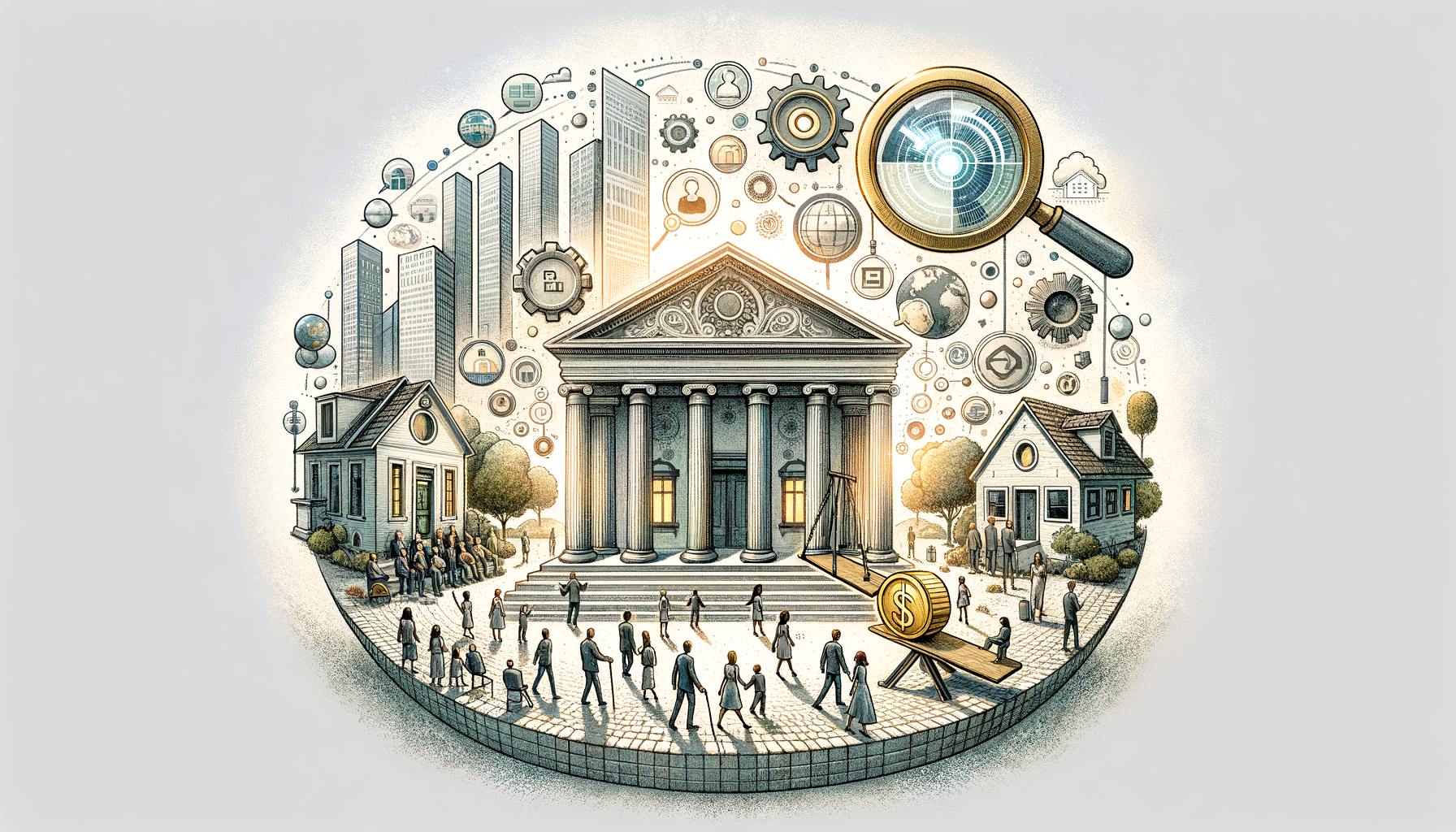“Exploring the Latest Trends and Analysis in the Mortgage Industry: A Comprehensive Review”
**The Evolution and Future of the American Mortgage Market**
The landscape of the American mortgage industry has undergone significant changes over the past few years, driven by a variety of economic, technological, and social factors. These shifts have not only transformed how loans are processed but also how they are perceived by the public and marketed by lenders. Let’s dive into the current state of this vital industry, exploring recent trends, potential future developments, and the overall impact on consumers and financial institutions alike.
—
### **The Shrinking Role of Brick-and-Mortar Offices**
One of the most notable trends in the mortgage sector has been the diminishing importance of physical bank branches. The digital revolution has ushered in an era where online applications and mobile banking are increasingly becoming the norm. Customers are now able to apply for mortgages from the comfort of their own homes, reducing the need for in-person visits.
This shift is not just about convenience but also about efficiency. Digital applications streamline operations, cutting down on the time and manpower needed to process loans. As a result, some banks and lending institutions are reevaluating the necessity of maintaining expansive networks of branches, with several significant players significantly reducing their physical presence.
### **Technological Innovations Reshaping the Industry**
Advancements in technology have played a pivotal role in reshaping the mortgage industry. The development of sophisticated algorithms and data analytics tools has enabled lenders to assess risk more accurately and make quicker decisions. These technologies also help in detecting fraud and ensuring compliance with regulatory requirements.
Moreover, the advent of blockchain technology promises a future where transactions can be processed more transparently and securely, potentially reducing the incidence of fraud and errors. By allowing for a decentralized and immutable ledger of mortgage transactions, blockchain could eventually eliminate the risk of document tampering and improve the overall reliability of the mortgage process.
### **The Changing Consumer Base**
Demographic shifts are influencing the dynamics of the mortgage market. Millennials, now entering their prime home-buying years, have different expectations and behaviors compared to previous generations. Highly savvy in terms of technology and more likely to research and shop for mortgages online, millennials favor quick, digital-first solutions over the traditional, slower processes.
Moreover, the importance of catering to a diverse population has never been more critical. Lenders are increasingly focusing on creating inclusive policies and products that accommodate the unique needs of various ethnic and economic backgrounds. This not only helps in expanding the customer base but also in building trust and loyalty among new homebuyers.
### **Interest Rates and Housing Market Fluctuations**
Interest rates continue to play a crucial role in the housing market dynamics. For instance, low-interest rates generally increase the affordability of homes by lowering mortgage payments, thereby boosting demand for housing. Conversely, when rates rise, borrowing costs increase, typically cooling down housing demand and prices.
The Federal Reserve’s decisions on interest rates are heavily influenced by broader economic indicators like inflation and GDP growth. Monitoring these trends is crucial for both lenders and borrowers, as sudden shifts can affect the affordability and availability of loans.
### **The Impact of Government Policies**
Government policies and regulations significantly impact the mortgage industry. For instance, the tax reforms of recent years have altered the calculus on home ownership and mortgages. Adjustments to tax deductions related to mortgages and local property taxes have influenced consumer behavior concerning buying, selling, and investing in real estate.
Moreover, programs and reforms proposed by governmental agencies aimed at supporting first-time homebuyers or offering refinancing options can stimulate the market. However, they also require banks and lenders to continuously adapt to new guidelines and frameworks, which can be resource-intensive.
### **Sustainability and Green Financing**
There is a growing trend towards sustainability in all sectors, and the mortgage industry is no exception. Green mortgages, offering favorable terms for energy-efficient homes or for homeowners planning green improvements, are becoming more popular. These initiatives not only support environmental objectives but also represent a significant growth area for lenders, as consumers increasingly prioritize sustainability in their housing choices.
### **Risk Management and Regulatory Compliance**
The financial crisis of 2008 highlighted the need for robust risk management and stringent regulatory compliance in the mortgage industry. Since then, there has been an increased focus on tightening regulatory frameworks to prevent the recurrence of such crises. Lenders have had to invest heavily in compliance and reporting systems to adhere to these regulations, which, while improving safety and trust in the market, have also increased the operational complexities.
### **Future Perspectives: Artificial Intelligence and Machine Learning**
Looking to the future, technologies like AI and machine learning are set to have a profound impact on the mortgage industry. These technologies offer promising improvements in terms of efficiency, accuracy, and personalized service delivery. For instance, AI can help automate routine tasks such as document verification and risk assessment, allowing loan officers to focus on more strategic activities.
### **Conclusion**
The American mortgage industry is at a crossroads, influenced by technological advancements, demographic changes, regulatory environments, and economic forces. As the sector continues to evolve, both challenges and opportunities lie ahead. For consumers, the journey of obtaining a mortgage is becoming more accessible and customized. For lenders, the imperative to innovate and adapt has never been greater.
The future, while uncertain, holds the promise of a more efficient, inclusive, and responsive mortgage market. Whether you are a potential homebuyer, a current homeowner, or a financial services professional, staying informed and adaptable will be key to navigating this ever-changing landscape.

